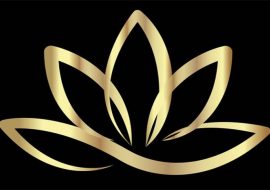
Orthodox Masculinity – Angry Men – (Part 2)
Men I have worked with have described how other men judge men who express emotions and feelings, other than anger. Anger, being the exception to the rule. Anger, being the only acceptable masculine emotion. Please refer to Part 1 of this article which talks about emotions being seen as a “feminine condition”.
And, as a consequence men have learnt that their emotional life must be controlled. They have adapted to this way of being by learning to use various coping strategies that they deploy, for example, by burying, ignoring or dismissing their emotional feelings and emotional needs to name but a few.
These men may present in my therapy room with an array of defensive behaviours such as anger, frustration and controlling behaviour, which sometimes plays out in my therapy room as an attempt to take control of me and the therapeutic relationship.
Behaviours and actions such as these are welcome in my therapy room. It assists me to find a way into establishing a therapeutic relationship with my clients, which in-turn gives me a way in to the therapeutic exploration of the emotions behind the anger. This therapeutic relationship can sometimes take many months to build, before a level of trust is established to enable the exploration of the emotions behind the anger to be explored. Anger can mask a lot of pain and hurt. And a man needs his armour to protect himself from this pain. Unless there is a level of therapeutic trust, the armour will remain on. This can be very challenging work for the therapist and client and very rewarding work for both.
Anger is a valid emotion. And the emotions behind the anger needs to be understood and explored from a place of love and compassion, by both the therapist and client. By gaining some understanding of the emotions that present as anger, enables clients to start to understand themselves in ways that they may have not done before. For example, they may learn to have some compassion for themselves, or perhaps they may start to learn what drives them. This insight into the “Self” (refer to website, individual counselling) then leads onto other insights. For example, they may start to gain an understanding into why they react to certain situations, events and others in the way that they do. And, as they look at their story and gain a deeper understanding of themselves and the impact their story has had on them, most find that the anger starts to subside. This process can take many months of hard, tough and challenging therapeutic work. And can sometimes initiate a deep healing process.
Behind anger can be an array of emotions, such as sadness, disappointment and perhaps shame. To be able to explore these emotions in a therapeutic way can be a very cathartic and transforming experience.
Be Gentle With Anger
Author: Jeff Foster, Donna J Gia and Jai Chauhan
Be gentle with anger. Bow before it. It is not what you think it is.
Let it come closer, let it enter you if it must. Feel its power. Until there is no division between “Self” and “anger”. Until you cannot call it “anger” at all. Until there is only fire, passion. But no violence.
Anger is the roar of a lion, the cry of a universe longing to be born. It reminds you, when you have forgotten, that the power of life moves through you. That you have a voice.
Do not push your anger away, or label it “negative” or “unspiritual”. Do not pretend it is not there. No need to act it out, either.
Feel its pounding, its vibration, its longing to be acknowledged, held. At its burning core, discover courage.
The courage to be yourself. To hold your path, fearlessly. To speak for those without a voice. To stand up for truth, with passion and dignity. To roar with love.
Know that your heart is vast and spacious, and anger, so often misunderstood, has a home in you, a sanctuary.
The psychology of men and masculinity – Part 3 – will be posted in the next week or two.




